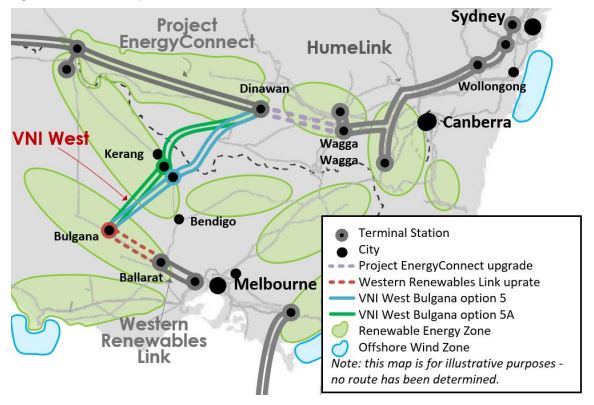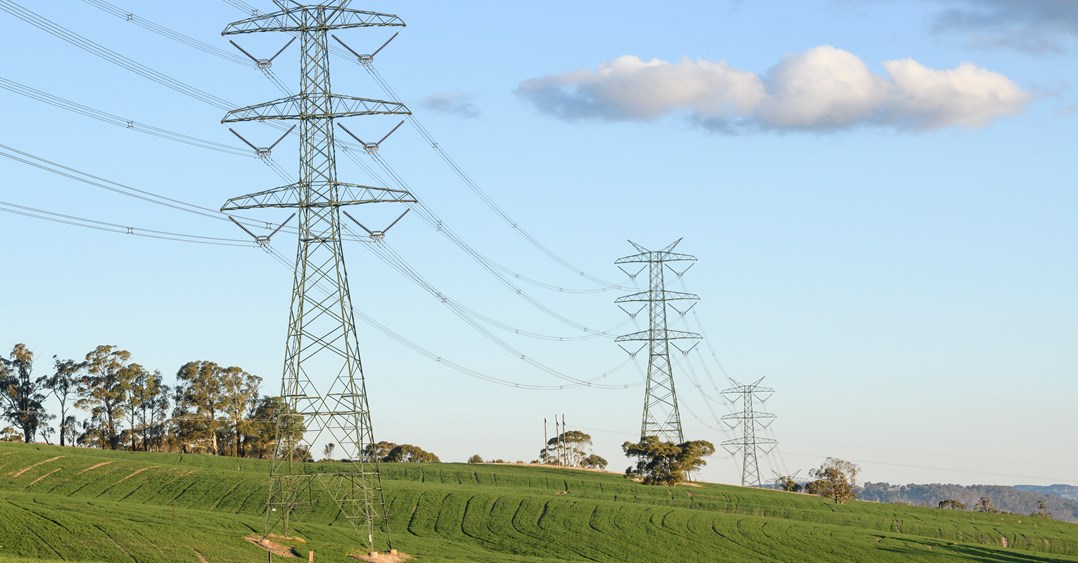The $3.4 billion (USD 2.16 billion) VNI West interconnector, proposed by AEMO Victoria Planning (AVP) and transmission company Transgrid, has inspired fierce challenges on various grounds in the last year.
One of the project’s major critics, a community-based group known as the Moorabool and Central Highlands Power Alliance (MCHPA), in June filed a dispute with the Australian Energy Regulator (AER), claiming, among other things, that AVP and Transgrid did not comply with the National Electricity Rules in choosing the most economical route for the project nor did it meet consultation requirements.

Image: AEMO
The dispute has today been dismissed by the Regulator, which deemed “none of these grounds provide a basis to require AVP and Transgrid to amend” their VNI-West design.
The Moorabool and Central Highlands Power Alliance said it is “seeking legal advice in relation to the determination.”
It also noted the AER ruling is “a separate dispute to the Alliance’s Supreme Court challenge at trial in September against the Victorian Government’s Ministerial Orders, which awaits the judge’s decision.”
A brief history of the VNI-West
The VNI-West interconnector was identified as an “actionable project” in Australia’s energy transition roadmaps, known as the Integrated System Plan (ISP), from both 2020 and 2022, published by the Australian Energy Market Operator or AEMO. “Actionable projects” are given a streamlined approvals processes.
In 2023, VNI-West’s proponents, AVP and Transgrid, outlined a preferred route option for the project, Option 5A. This would connect the VNI-West to a terminal station at Bulgana in Victoria’s west, then link up with a substation near Kerang in north central Victoria before crossing the Murray River north of Kerang, linking to the EnergyConnect line at Transgrid’s Dinawan substation north of Jerilderie in New South Wales.
Consultation on the plan saw over 500 submissions of opposition, with high-profile critics labelling the project a “monumental mistake”, claiming it would be easier to upgrade existing transmission lines and that the project could triple transmission charges.
Nonetheless, by May Victorian Energy Minister, Lily D’Ambrosio, signed a ministerial order to progress the preferred route for the proposed 500 kV double-circuit overhead transmission line.
The project is a potent example of the social license issues being encountered in Australia’s energy transition. That same month, May, Australia’s Energy Minister, Chris Bowen, described Australia’s process for assessing transmission projects, known as the regulatory investment test for transmission or RIT-T process, as “not a fit-for-purpose process.”
Much has been said about shortcomings of the RIT-T process, but most concerns boil down to the fact that the process fails to look at either environmental or social impacts of proposals.
Minor reforms to the RIT-T process are scheduled to come into effect in November, next month, but these are not expected to quell critiques. “When it comes to transmission, social licence is the most important issue we have to face,” Bowen said in May.
Despite the VNI-West project steadily progressing through the approvals pipeline, criticism and debate around the project shows little sign of quietening.
This content is protected by copyright and may not be reused. If you want to cooperate with us and would like to reuse some of our content, please contact: editors@pv-magazine.com.









1 comment
By submitting this form you agree to pv magazine using your data for the purposes of publishing your comment.
Your personal data will only be disclosed or otherwise transmitted to third parties for the purposes of spam filtering or if this is necessary for technical maintenance of the website. Any other transfer to third parties will not take place unless this is justified on the basis of applicable data protection regulations or if pv magazine is legally obliged to do so.
You may revoke this consent at any time with effect for the future, in which case your personal data will be deleted immediately. Otherwise, your data will be deleted if pv magazine has processed your request or the purpose of data storage is fulfilled.
Further information on data privacy can be found in our Data Protection Policy.